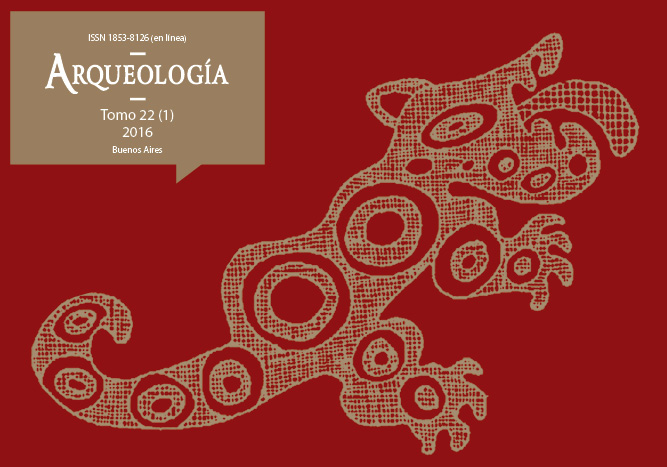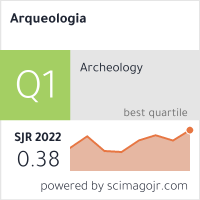Archaeological study of adhering organic residues in Pre-hispanic potteries of middle Paraná basin
Keywords:
Archaeobotanical studies, Siliceous and starchy micro remain, Ceramic vessels, Middle Parana basin, Late Holocene
Abstract
Plant microremains study constitutes a relatively recent national research line in archeology, with great informative potential to explore the relationships between human groups and plant resources in their environment. In Northeastern Argentina, these analyzes have begun to be applied in recent years in the lower Paraná basin, but are still scarce in the middle Paraná. This paper presents the first results obtained from the analysis of siliceous and starchy microremains in ceramic samples with organic residues, which came from archaeological sites located on the left bank of the middle Paraná basin, in the Entre Rios province. Data suggest that the vessels contained squash (Cucurbita moschata), sweet potatoes (Ipomea batatas), probably corn (Zea mays), and a variable presence of grasses. These analyzes provide evidence about the use of plant resources from pre-Hispanic groups who occupied the area during the late Holocene, and contribute to discuss regional problems linked to the dietary patterns of these groups.Downloads
Download data is not yet available.
How to Cite
Colobig, M. de los M., & Ottalagano, F. V. (1). Archaeological study of adhering organic residues in Pre-hispanic potteries of middle Paraná basin. Arqueología, 22(1), 193-210. https://doi.org/10.34096/arqueologia.t22.n1.2471
Section
Articles
Authors who publish in this journal agree to the following conditions:
- Authors retain copyright and yield to the journal right of first publication with the work registered with attribution license Creative Commons, which allows third parties to use the published always mentioning the authorship of the work and first publication in this magazine.
- Authors can make other independent and additional contractual arrangements for the non-exclusive distribution of the version of the article published in this issue (p. Eg., Inclusion in an institutional repository or publish it in a book), provided that clearly indicate that the work was published for the first time in this magazine.
- It allows and encourages the author / s to publish their work online (eg institutional or personal pages) before and during the process of revision and publication, as it can lead to productive exchanges and greater and more rapid dissemination of work published (See The Effect of Open Access).





(1)13.png)






1.jpg)
1.jpg)


13.png)
1.png)


(1)1.png)









